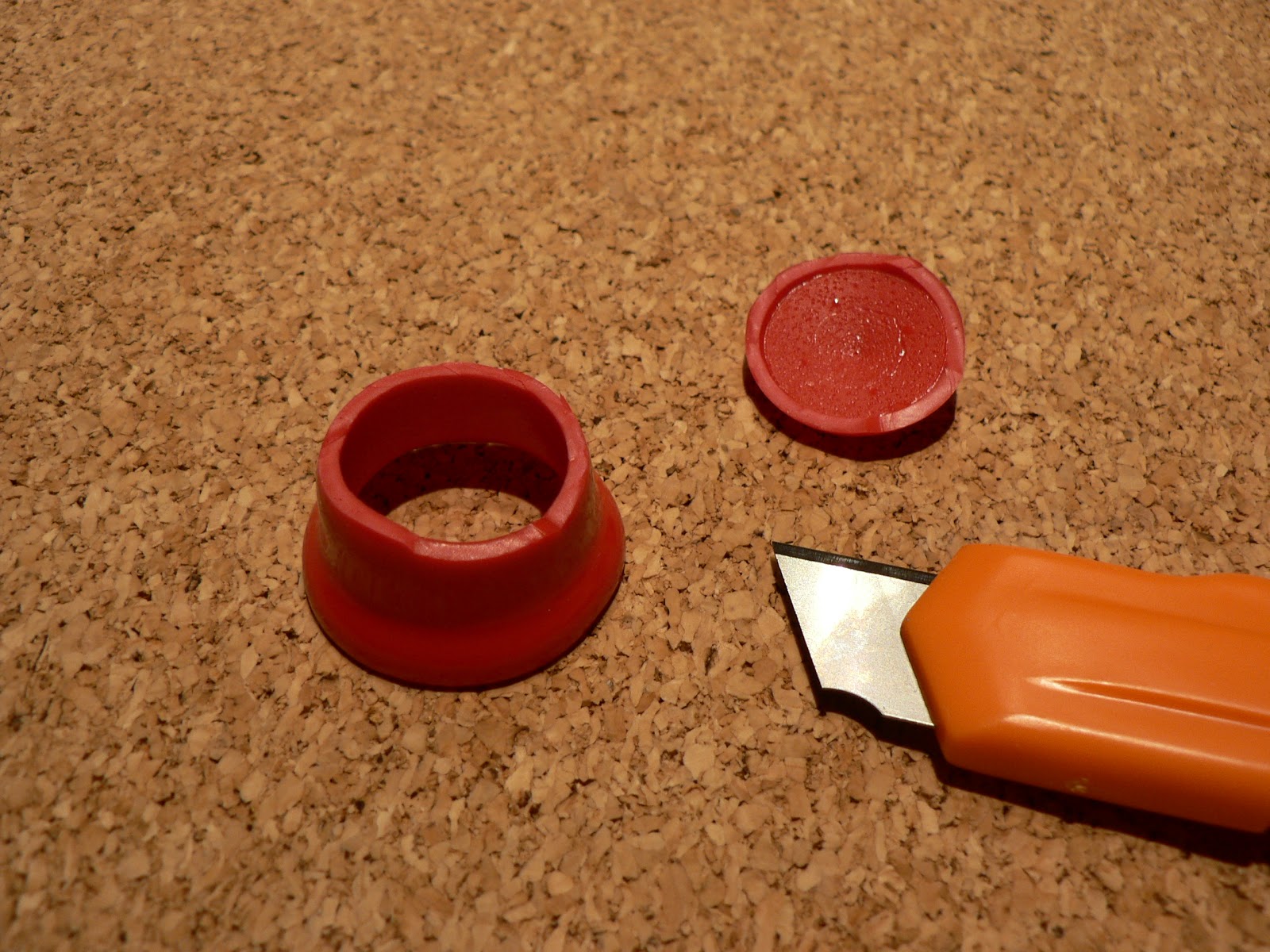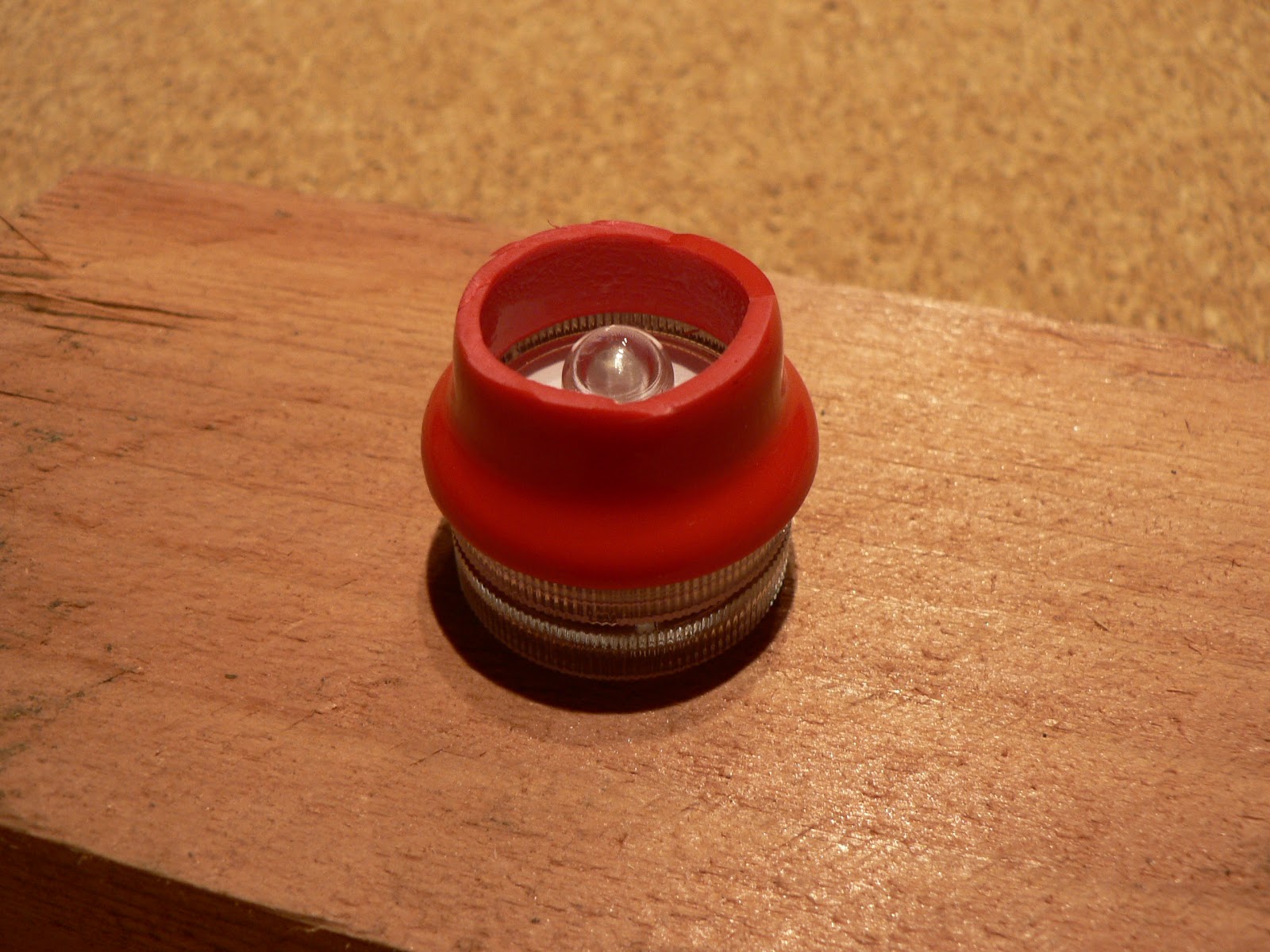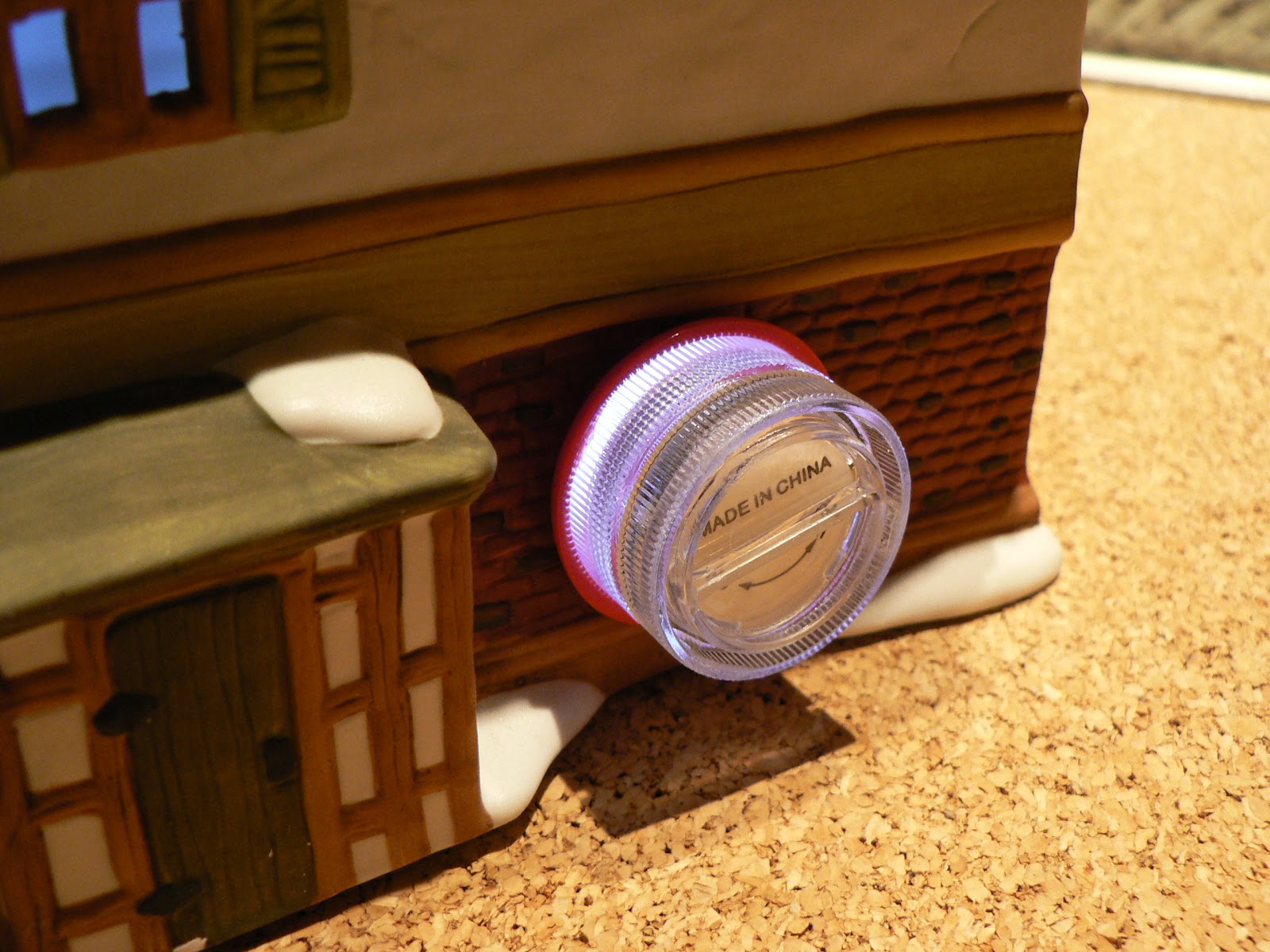2016 Update: Updated links to parts sources - some had broken since the original post. Also: For a festive touch, we use
color-changing LED tea lights in the Fezziwig building. That guy knew how to party!
Last weekend my wife and I started getting the Christmas decorations out of storage. One of my wife's holiday favorites is a set of
Dickens-style houses/buildings, some have signs like "Scrooge & Marley" "Fezziwig" etc. Each has a C7 lamp and a cord. Given the number of houses she has, cord management is always an issue. We wind up trying to hide them with fluffy "snow" fabric, and then we have to hide a socket-strip and all the plugs. The lights get hot, so in proximity to the fabric there's always a fire risk if one of the lights were to pop out. The houses are fun, but it's a huge mess, so we decided to homebrew some LED lights for them.
 |
| Top removed from thread protector |
We started by buying a set of small
submersible LED tea lights. These typically come in packs of 10 - 12, are used for weddings and such (toss them in the bottom of the punch bowl, etc), and cost about $0.80 each. You can get them in white, color-changing, or a mixed set. Each light uses a couple of CR2032 batteries, so we picked up a
pack of 20 for under $8.00. The lights arrived with batteries, and only one of them was depleted, so we were good to go. We also discovered that a color-changing light had got mixed into our set of white lights, which the kids decided was really cool because that house "looks like they're having a party".
 |
| LED glued into thread protector |
As it turns out, some of her houses have larger openings for the C7 lamps, so we just set the light on the table and put the house on top of it. The others had smaller openings, so I needed to hack something up. We considered using modeling clay, but I thought that might get messy.
Sugru or InstaMorph (moldable rubber) would have been great, but I used all my Sugru to make a custom mount for a Wii sensor. Then I remembered that I had a bag of
pipe thread protectors left over from an amateur radio antenna install - I use them to make custom grommets for my coax cable ingress box.
 |
| Perfect fit! |
As it turns out, the LED lights friction-fit perfectly into thread protectors. So I sliced off the end to expose the LED. I put a few drops of hot glue on the thread protector to secure the LED. They fit perfectly into the holes where the C7 lamps used to go, and they put off good light.
We're pleased with the end result, but if I had to make a change I would use
amber/yellow LEDs instead of the pure white we have now. Maybe over time I'll swap in some of those if the white ones fail. In the meantime, our Dickens Village is lit up with no cords or concerns about fire danger.













